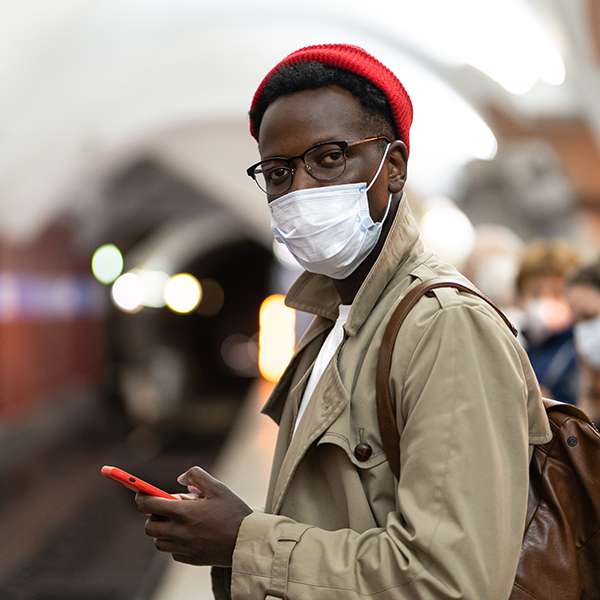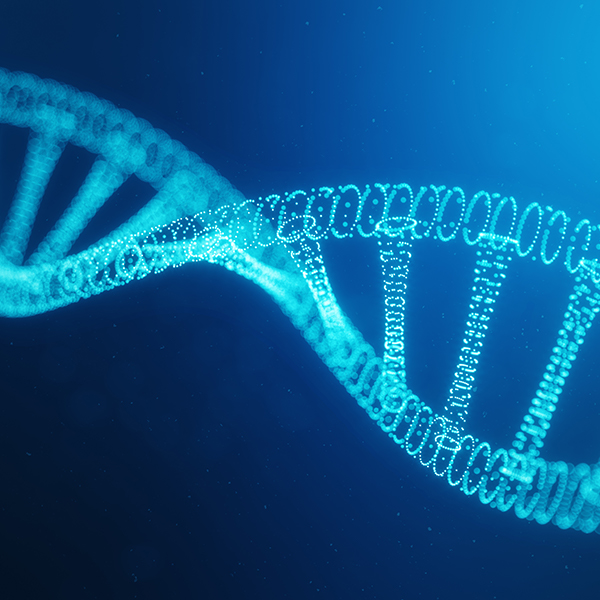Are these words in your vaccine vocabulary?

This article - the first in a series of two - explains the words we all need to understand to be able to understand the ins and outs of COVID-19 vaccines (and all vaccines). Empower yourself with key vaccine vocabulary ahead of our second article which explores individual vaccines in fuller detail.
By 26 January 2021, 6.56 million people across the world had been vaccinated against COVID-19 (having received a full dose whether once-off or two-dose). 57 countries around the world have, to date, begun to vaccinate people.
- Read all about South Africa's vaccine rollout plan
Which words do we need to understand and have in our vocabulary before we are able to look at the ins and outs of specific vaccines?
Here's a handy list of key terms that will equip you to better understand the COVID-19 vaccines currently in development or manufacture - and which you could have access to over the coming year and in the long-term.
Adverse events (after getting a vaccine)
The US CDC defines adverse events as, "Any health problem that happens after a shot or other vaccine. An adverse event might be truly caused by a vaccine, or it might be pure coincidence." Even when a vaccine is approved for use, continued vaccine safety monitoring systems pick up on adverse events that may not have been seen in clinical trials - so that experts can quickly study and see whether it is a true safety concern (and decide whether changes are needed the vaccine recommendations).
Antibodies
Antibodies are proteins which are found in our the blood. They are made by our immune system when it encounters a substance that is considered foreign to the body - like bacteria or viruses - and invading the body. Antibodies protect the body from disease by binding to these organisms and destroying them. When we receive a vaccine, this stimulates our immune system to produce antibodies against a disease and so train the immune system to fight it off, before we actually encounter the disease itself. In this way, if we become infected in future, our immune system has a significant head start in fighting off the disease and so we are far less likely to develop symptoms or severe illness.
Booster shots
Booster shots are extra doses of a vaccine needed from time to time to "boost" the immune system. For example, the US CDC explains that its recommended that the tetanus and diphtheria (Td) vaccine is recommended for adults every ten years.
- Read our article on South Africa's COVID-19 variant and where booster shots are being considered
Clinical Trials
Clinical trials refer to research done to answer a specific question about a medical product. These trials follow a typical series from early to small-scale, late stage and large scale. In a Phase 1 clinical trial the safety of a medical product like a drug or vaccine is studied, normally in a small number of healthy volunteers. In Phase 2 researchers look at the drug's efficacy and optimal doses needed. If all goes well, then comes *Phase 3 (involving up to 3000 or more participants ) where the focus is to show and confirm the evidence found in the previous phases and to prove that a drug or vaccine is safe, beneficial and effective for its intended purpose in a larger population of people.
Dose
This refers to how many times you need to be injected with the COVID-19 vaccine. Single-dose vaccines (like the Johnson & Johnson vaccine) only require one shot. Two-dose vaccines require two shots with a set time period between them depending on the vaccine.
- Will I need a COVID-19 vaccine every year, like the flu vaccine? The first clinical trial participants got their COVID-19 vaccines at the end of July 2020 and the first vaccines were authorised in December 2020. We only have information about protection against COVDI-19 disease for a few months after vaccination and researchers are yet to determine the degree to which these vaccines protect against COVID-19 one or two years after vaccination. They will continue to monitor trial participants to find out.
Emergency Use Authorisation
In an emergency situation - as in the case of a global pandemic - it may not be possible to look at all the evidence around the use of a drug or vaccine that a regulatory body would usually look at before approving these for use. In this case, an Emergency Use Authorisation (EUA) is issued (as has been issued by the US Food and Drug Administration (FDA) to make a vaccine or drug available before all the evidence is in. This only happens when there is strong evidence that people would benefit from a drug or vaccine. EUAs are only granted during a declared emergency.
Efficacy (versus 'Effectiveness')
- Why do we talk about 'efficacy'?
- Why don't we just say 'effectiveness'?
First off, vaccine 'efficacy' is not the same as vaccine 'effectiveness'. Here's why.
When we talk about vaccine 'efficacy' we are referring to the vaccine's performance under ideal and controlled conditions - such as in a clinical trial situation.
- So, if a vaccine reports a '90% efficacy' this means if a group of clinical trial participants get a vaccine and then are infected with COVID-19 afterwards, the vaccine prevents 90% of these people from developing COVID-19 symptoms (compared with people who were 'vaccinated' with a placebo). In other words, the vaccine prevented not only any COVID-19 disease symptoms, but also - importantly - severe disease.
So, in referring to degrees of vaccine efficacy below (where we explore each vaccine type) we are talking how much the vaccine was able to reduce disease in people who took the vaccine as part of a clinical trial, compared to people who took a *placebo in the same trial.
- *A placebo is a fake version of a drug or vaccine being tested in a clinical trial. Giving some people a vaccine and some people a placebo allows researchers to test the difference in results in each group more accurately. Clinical trials are often "double-blind" so neither the participants nor the researchers know whether each participant got the real vaccine or a placebo - and they only find out at the end of the study.
When we talk about vaccine 'effectiveness' we are talking about how the vaccine performs in the real world and this may differ to how it performs in a clinical trial. Keep in mind that once the vaccine rollout to the general population begins, researchers continue to monitor it for effectiveness - to see how well it works for all vaccinated people, over a few years.
We aren't yet sure if the efficacy that each of the COVID-19 vaccines being developed will equal their effectiveness once they are rolled out to the population at large and it may be a few years before we have data on the effectiveness of the vaccines in various population groups.
Keep in mind that very few vaccines are 90% effective. The flu vaccine for example, is 40 % to 60 % effective in the real world but it still prevents serious flu and saves millions of lives every year.
Population immunity
Also known as "Community immunity", this occurs when enough people in a population are immune to an infectious disease like COVID-19 - either because they have been vaccinated or recovered from prior illness - to the extent that the spread of a disease like COVID-19 from person to person becomes unlikely. Population immunity even protects people who are not vaccinated - like newborn babies or people who have conditions that prevent them being vaccinated - as the disease has little opportunity to spread within the community.The immune system and immunity
The immune system is a system in our bodies that is responsible for fighting off disease. The immune system contains elements that identify foreign substances in the body (like bacteria, viruses, fungi or parasites) and develops a defenses against them which include antibodies (see our definition of antibodies above). The defense that mounts is called "the immune response".
When we have immunity against a disease this means that we are protected against developing symptoms of the disease or severe illness.
Side effects
Side-effects are secondary, unwanted effects caused by a medical treatment - whether taking a medicine or a vaccine or any other medical treatment. Side effects can be negative or beneficial. When we have a vaccine - any vaccine - it stimulates an immune response in our body and several reactions are typical of this immune response. These may include flu-like symptoms, joint pain, pain at the injection site and so on. According to the US Centres for Disease Control and Prevention side-effects related to having the COVID-19 vaccine are normal and show that your body is mounting an immune response. These usually go away within a few days and may include fever or chills, tiredness, headaches, pain and pain at the injection site. The US CDC advises calling your doctor if your side-effects don't disappear after a few days or if the redness and tenderness around the spot where your vaccine was injected worsens within 24 hours.
- Read more on vaccine side-effects in detail
- Where are COVID-19 vaccines injected into the body? The COVID-19 vaccines are injected in the shoulder (deltoid) muscle (so, in your upper arm) using a needle/syringe.
Storage (of vaccines)
This refers to the conditions that the vaccine needs to be stored under to remain viable. All COVID-19 vaccines require refrigeration to remain effective, but the temperatures at which they need to be stored vary from temperatures typical of a household fridge to very cold storage that can only be achieved in special freezers.
Vaccine technologies - what makes the vaccines work the way they do?
According to the World Health Organization (WHO), there are three main approaches to designing a vaccine. The differences lie in whether the vaccine uses:
- A whole virus or bacterium (the disease-causing germ) - using inactivated form of the germ, the live germ, or a safer virus to deliver some proteins from the disease-causing germ to trigger an immune response without causing disease.
- Just the parts of the germ that the immune system needs to recognise and that trigger the immune system
- Just the genetic material that provides the instructions for making specific proteins that are typical of the germ - and not the whole germ.
- DNA and RNA are the types of genetic material within our cells that contain instructions for making proteins. DNA is first turned into messenger RNA (or mRNA) and that carries the instructions for making specific proteins.
Vaccine technologies - how does the 'genetic material' approach relate to COVID-19 vaccines?
The front runner COVID-19 vaccines discussed in Article 2 of this series are each based on the genetic material approach which is a new way of developing vaccines.
- mRNA vaccines contain mRNA (short for messenger RNA), which is injected into our bodies to instruct our own cells to produce the very same spike proteins that appear on the surface of the SARS-CoV-2 virus - the virus that causes COVID-19. The appearance of these spike proteins on cells in our body triggers an immune response that is similar to the immune response we would see if we were actually to become infected with the SARS-CoV-2 virus, so training the immune system to protect us against COVID-19 should we ever encounter it after being vaccinated.
- Viral Vector or DNA vaccines: a completely harmless virus has been developed to contain the gene that codes for the spike protein on the surface of the disease-causing COVID-19 virus. This harmless virus is introduced into our bodies when we are vaccinated. The virus delivers DNA to our cells and this DNA instructs our cells to produce the very same spike proteins that appear on the surface of the SARS-CoV-2 virus (the virus that causes COVID-19). The appearance of these spike proteins on cells in our body triggers an immune response that is similar to the immune response we would see if we were actually to become infected with the SARS-CoV-2 virus. This is how this vaccine trains our immune system to protect us against serious COVID-19 illness should we ever encounter it (and become infected with it) after being vaccinated.
- Now you're ready to read article two in this series and explore various vaccines in more specific detail.
All medical information found on this website including content, graphics and images, is for education and information objectives only. Discovery publishes content to help to promote a better understand of COVID-19 and COVID-19 vaccinations. The content covered is an overview of key concepts and is not exhaustive in nature. We encourage further reading from other credible sources where necessary.
South African organisations:
- National Department of Health's dedicated COVID-19 portal: https://sacoronavirus.co.za/
- National Institute for Communicable Diseases' (part of the National Health Laboratory Service) dedicated COVID-19 hub
- South African Health Products Regulatory Authority (SAPRHA - part of the National Department of Health).
- South African Medical Research Council (SAMRC)
- South African Medical Journal (SAMJ)
International Organisations:
- Johns Hopkins University
- Harvard Health, Harvard University COVID-19 resource center
- Mayo Clinic COVID-19 resource center
- New England Journal of Medicine (NEMJ)
- US Centers for Disease Control and Prevention (US CDC)
- US Food and Drug Administration (US FDA)
- World Health Organization (WHO)


